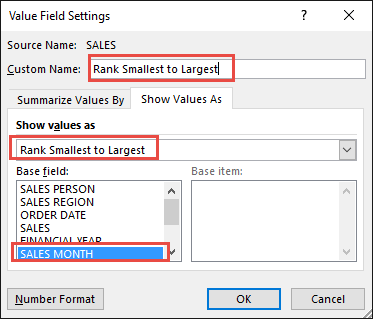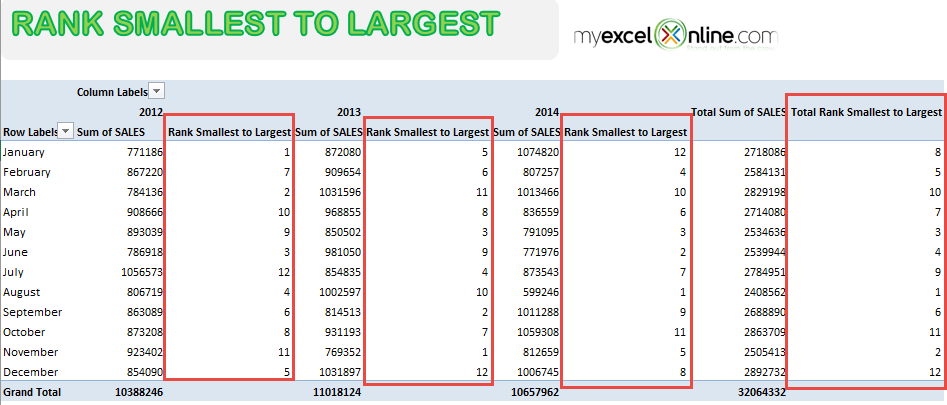Excel Pivot Tables have a lot of useful calculations under the SHOW VALUES AS option and one that can help you a lot is the RANK SMALLEST TO LARGEST calculation.
This option will immediately calculate the rankings (1 being the smallest value) for your values, allowing you to pinpoint the risks or opportunities quickly!
In the example below I show you how to get the Rank Smallest to Largest:
STEP 1: Insert a new Pivot table by clicking on your data and going to Insert > Pivot Table > New Worksheet or Existing Worksheet
STEP 2: In the ROWS section put in the Sales Month field, in the COLUMNS put in the Financial Year field and in the VALUES area you need to put in the Sales field twice, I explain why below:
STEP 3: Click the second Sales field’s (Sum of SALES2) drop down and choose Value Field Settings
STEP 4: Select the Show Values As tab and from the drop down choose Rank Smallest to Largest.
Select Sales Month as the Base Field.
This means that we will rank the Sales Values by the Sales Month (where Rank 1 is the Smallest).
Also change the Custom Name into Rank Smallest to Largest to make it more presentable. Click OK.
You now have your Pivot Table, showing the Smallest to Largest Rankings for each Month.
You can see that each red box is the ranking for each individual year (for Years 2012, 2013, 2014 and the Total Rankings).

Bryan
Bryan Hong is an IT Software Developer for more than 10 years and has the following certifications: Microsoft Certified Professional Developer (MCPD): Web Developer, Microsoft Certified Technology Specialist (MCTS): Windows Applications, Microsoft Certified Systems Engineer (MCSE) and Microsoft Certified Systems Administrator (MCSA).
He is also an Amazon #1 bestselling author of 4 Microsoft Excel books and a teacher of Microsoft Excel & Office at the MyExecelOnline Academy Online Course.













